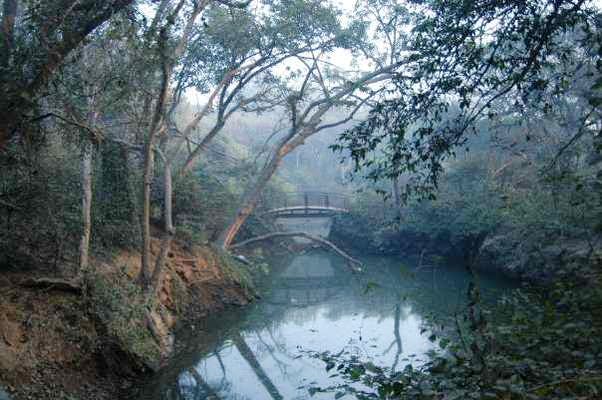By Mohd. Salman
Once in a park, you leave behind a lot of the things that life in the big city thrusts upon you. You see the sky stretched out, the sounds of traffic {though present} are muffled. Butterflies flitter among the flowers, birds chirp as they hop from tree to tree. The air smells fresher, and nothing beats the feeling of stretching out on freshly cut, damp grass.
Parks in a big city are more than just big open spaces to play around and run in. They are lovers’ retreats, a shelter for the lonely, an escape from the humdrum routine we all are forced to live through; little bubbles where deadlines and excel spreadsheets do not matter, places where if you ignore your phone awhile, you experience a real break from all your worldly cares.
In a city as old as Delhi, where rulers came and went, building and burning kingdoms and empires, a lot of the parks of old survive, with the last remains of forgotten days. Little buildings and memorials with stories of their own. Run through these parks, play a game of whichever sport takes your fancy, but take some time to look around, to ponder over their stories.
The Northern Ridge has always been one of my favourite haunts in the city. Adjacent to North Campus, this was a little getaway just a few hundred metres from my hostel, which I’d run off to every now and then.
‘Inspired’ by London’s Hyde Park, the Kamala Nehru Ridge, as it is known as, houses some important monuments from the 1857 Revolt. This part of Delhi was where the British camped during the war, and I’ve been told this landscape was rather hostile and bleak in the summer months back then. Today, it is a landscaped park, well-endowed with vegetation, beautiful flowers and over 70 species of resident birds. The monkeys that you find in profusion here are decidedly less violent than their friends in other parts of town.
Here will you find the Flagstaff Tower, a round building atop an incline, a massive staff jutting out at the top. This building was the rallying point of the British in 1857, and apparently back then you could see the Jama Masjid from this vantage point, before the high eucalyptuses and the rampant urbanization obstructed the view. With the Tower as the focal point, paths radiate in all directions, connecting Delhi University and Civil Lines. The Chauburja is another interesting ruin to be found here, as are the little pickets where British officers had their offices.
Narrow paths snake into the mock-forest as you walk in, the city blotted out as you find yourself among the birds, the mongoose, the land snails of all sizes and the trees of different kinds. Early mornings are an experience in themselves, especially in the winter. A gentle mist curls through the trees, and it gets very tempting to make your way to the Sarpakaar Jheel {serpentine lake}, and walk down the smooth pebble-strewn dry water channel that probably never got used much. There is also the Khooni Khan Jheel, the 80-foot deep reservoir that has a tragic history.
The numerous places to sit around draw people like ants to spilled honey, especially the abominable laughter clubs that send all manner of beautiful birds flying out of trees, an ordeal for the amateur seeking the rare encounter with nature.
It’s not easy to see all of the Ridge in one go, and even if you do, there are the sprawling lawns of North Campus alongside. Not to forget the delightful breakfast at the Gwyer Hall canteen, replete with meetha samosas and sabzi-kachori.
Next time you travel to Delhi’s northern quarter, pay the Ridge a visit.

